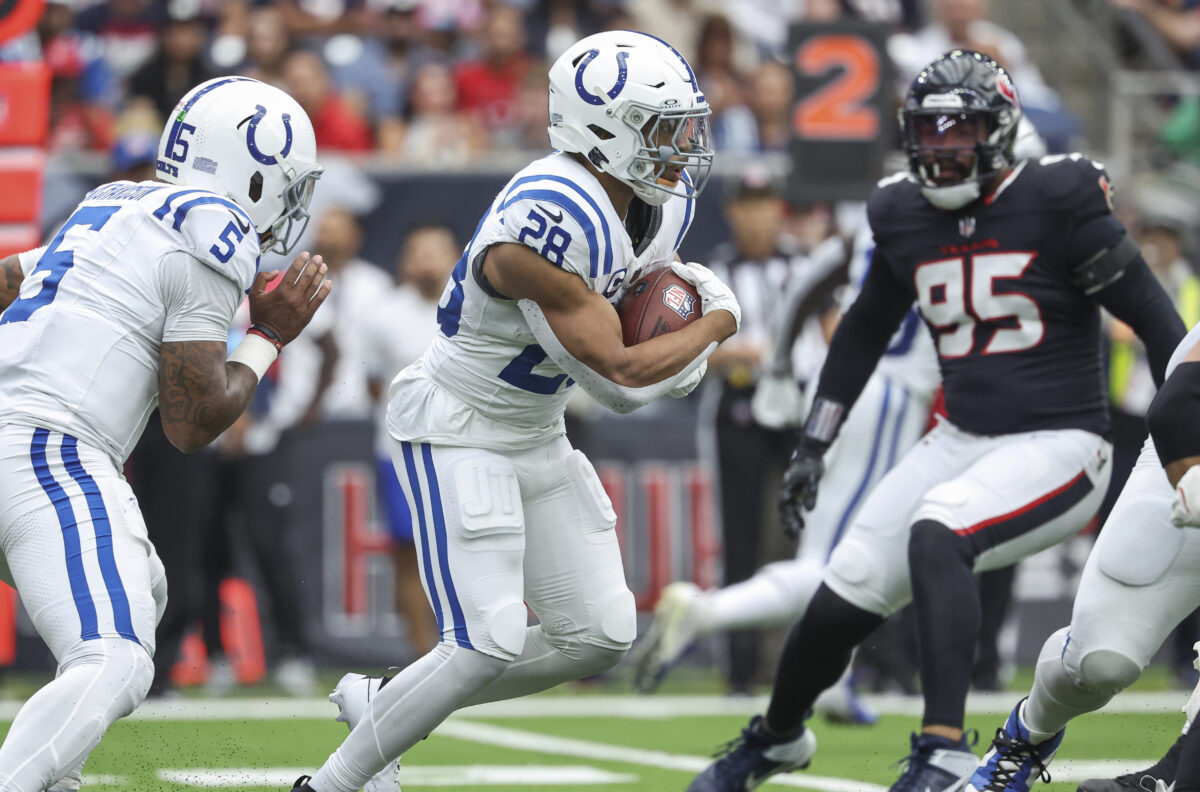Following Sunday’s loss to the Texans, the Indianapolis Colts are now not only two games back in the win column but have also lost the head-to-head tie-breaker with Houston as well.
Thanks to the play of the defense, who kept Indianapolis in this game, the Colts had chances in the fourth quarter to pull ahead or at least tie the game, but a volatile passing game was too much to overcome.
With the game behind us, let’s go down-by-down and take a look back at the key aspects of this matchup.
First down: The overall passing game is a major issue
We know this. Anthony Richardson finished the day just 10-for-32 passing for 175 yards with a touchdown and an interception.
With Richardson at quarterback, while the big plays are great, there is almost no presence of the short to intermediate passing games to help the Colts sustain drives. Any sort of early down inconvenience that puts the offense behind the sticks ultimately dooms the drive because the passing game doesn’t have the ability to overcome obvious passing situations.
The lack of development and improvement from Richardson now halfway through the season is concerning. Now, having said that, and this isn’t excusing Richardson’s performance, but when things are this bad in a certain phase of the game, it’s on everyone.
The Colts’ pass catchers didn’t help Richardson with some dropped passes, struggling to separate, and issues in contested catch situations.
Shane Steichen needs to limit the number of longer developing routes and have Richardson get the ball out of his hands in more quickly, in hopes of developing some sort of rhythm for both him and the offense as a whole.
Sunday’s game against Houston was again another performance with very few designed runs for Richardson as well–taking away one of the elements of his game that makes him such a dynamic presence–and the run-pass mix is often out of balance. Having a player like Taylor to lean on can take some of the burden off the passing game.
Without question, Richardson has to be better. And I’m certainly not going to guarantee that if the Colts do what was just discussed things are automatically going to improve. However, what I do know, is that something has to change.
Second down: End of half aggressiveness changes dynamic of the game
Shane Steichen said after the game that the reason the Colts came out passing the ball in the final minute of the second quarter was that they wanted to try to recreate what they did a week earlier against Miami, where the offense was able to get into field goal range before half.
However, that aggressive play-style backfired this time and changed the dynamic of the game. Instead of the Colts going into halftime tied at 10-10 and getting the ball at the start of the third quarter with a chance to take the lead, they went into halftime down a touchdown after Richardson’s interception. A punt on their opening third quarter possession then led to a Texans field goal.
Just like that, in a matter of minutes in actual game time, the Colts went from having a chance to take the lead to being down by two scores.
Third down: The defense did its job
There were some chunk passing plays from the Houston offense as well as some decent gains in the run game by Joe Mixon. However, against a talented offense, that’s the cost of doing business–it’s likely going to happen to some degree.
But overall, it was a good showing by the Colts’ defense, who helped keep the offense in this game. According to PFF, Indianapolis pressured CJ Stroud on 46 percent of his dropbacks–which was among the highest pressure rates for a quarterback in Week 8 and was a season-high for the Colts’ defense.
After Joe Mixon ran wild on Indianapolis in Week 1, they limited his to a modest 4.1 yards per rush. Overall, the Texans averaged 5.2 yards per play, which over the course of this 2024 season, would rank in the bottom third of the NFL.
The pressure on Stroud, which Gus Bradley helped generate through stunts and blitzes, along with limiting the run game, put the Texans in some third-and-longs, contributing to them converting only four of those 13 attempts. The Colts also came up big in the red zone, holding Houston to just 2-of-6.
The defense very much did enough to win this game.
Fourth down: Instant impact from Taylor and Buckner
On both sides of the ball this week, the Colts got a massive boost with the return of Jonathan Taylor and DeForest Buckner. Taylor provided some much-needed stability on offense, rushing for 105 yards at 5.3 yards per attempt, with a few explosive runs as well.
Buckner, meanwhile, totaled three pressures and a sack. According to ESPN, he had a pass rush win rate of 35 percent, which was among the highest of all defenders in Week 8, and also ranked top-15 among defensive tackles in PFF’s run stop rate metric as well.
As already mentioned, the Colts’ defense as a whole set a new season-high in pressure rate on the quarterback and allowed half a yard less per carry than their season average in the run game.
Not coincidentally, that all happened with Buckner back in the mix, who not only fills the stat sheet himself, but creates for his teammates with the attention that the draws.
